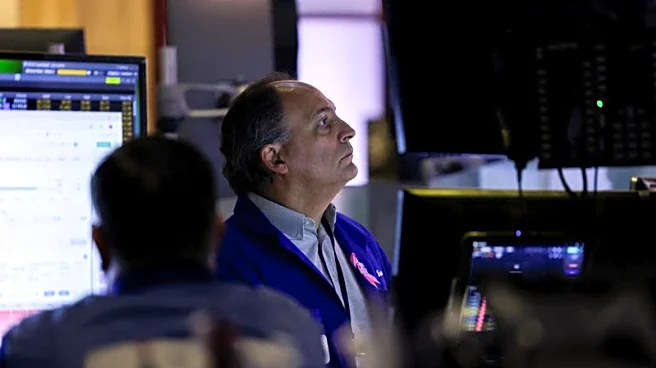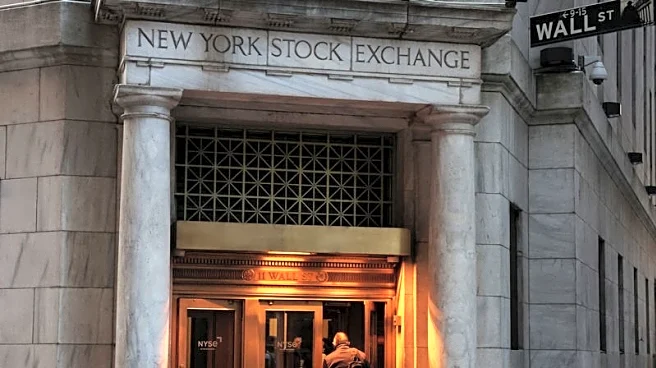What's Happening?
The Securities and Exchange Commission (SEC) is set to introduce a US Treasury clearing mandate next year, prompting hedge funds and proprietary trading firms to reconsider their clearing strategies. According
to a study by Acuiti in partnership with FIS, 75% of surveyed firms are reevaluating their positions on clearing due to this mandate. The mandate requires most US Treasury market transactions to be cleared through an SEC-approved covered clearing agency, aiming to enhance market transparency and reduce counterparty risk. The deadline for compliance has been extended to December 31, 2026, for Treasury cash clearing and June 30, 2027, for repo clearing. The report highlights that 44% of respondents are open to self-clearing in the future, while 12% have already become clearing members.
Why It's Important?
The SEC's mandate is significant as it could reshape the clearing landscape in the US Treasury market, impacting how hedge funds and trading firms manage their operations. By encouraging self-clearing, firms may gain greater control over their transactions, potentially reducing costs and increasing efficiency. This shift could also lead to increased use of third-party platforms for building clearing tech stacks, as firms seek to minimize operational burdens. The broader implications include enhanced market transparency and reduced systemic risk, which are crucial for maintaining stability in financial markets. Firms that adapt to these changes may gain a competitive edge, while those that do not may face increased regulatory scrutiny and operational challenges.
What's Next?
As the deadline for compliance approaches, firms are likely to accelerate their adoption of self-clearing practices. This trend may lead to further technological advancements in clearing operations, with a focus on cloud-based solutions for scalability and data analytics. Additionally, firms may invest in dedicated margin desks and advanced modeling tools to optimize collateral and notional management. The ongoing interest in technological upgrades suggests that real-time data feeds will become essential across various functions, enhancing margin optimization efforts. Stakeholders, including regulatory bodies and market participants, will closely monitor these developments to assess their impact on market dynamics and risk management practices.
Beyond the Headlines
The shift towards self-clearing and margin optimization reflects broader trends in the financial industry, where technology and regulatory changes are driving innovation. The move to cloud-based hosting of post-trade and risk management functions highlights the industry's focus on scalability and modularity. As firms navigate these changes, ethical considerations around transparency and risk management will become increasingly important. The long-term impact may include a more resilient financial system, better equipped to handle market volatility and external shocks.












